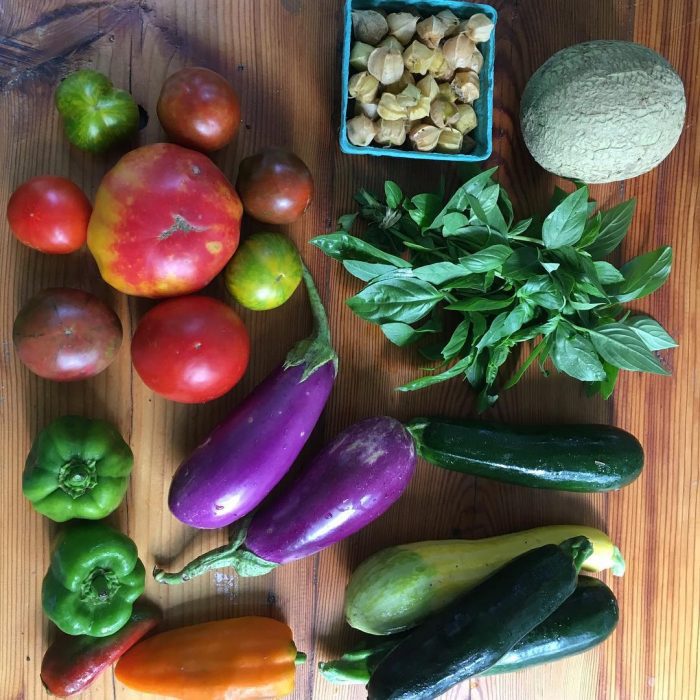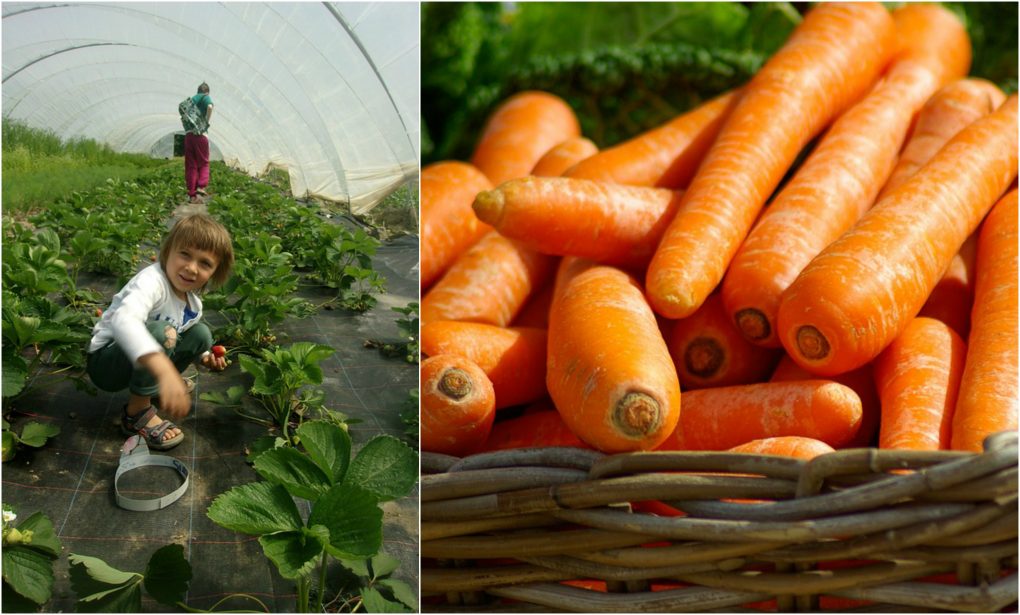7 Tips to Choose and Get the Most out of a CSA
Become a CSA Member: Invest in Local Farms, Reap Delicious Rewards
With the New Year already in motion, we are quickly approaching the season of plentiful fruits and vegetables. It won’t be long until we are enjoying a bounty of fresh cut greens, spicy arugula, spring onions, strawberries and, soon enough, juicy tomatoes and buttery potatoes! So how can you ensure these goodies make it to your table? You can join a local CSA — Community Supported Agriculture!
What it Means for the Farm

Photo: Owls Nest Farm
When signing up for a CSA share, a customer becomes a direct investor in their farm of choice. At the beginning of the farm season, people pay up front for a share that will typically last the entire growing season (though some farms offer extended CSA’s that start early and end late.) By paying up front, customers are insuring cash flow to the farmer regardless of ebbs and flows in the growing period.
On weeks when their harvest might be a little smaller due to unpredicted outside forces or transitioning crops, the farmer won’t have to take as substantial of a cut to sales. But don’t worry, when the farmer experiences an especially productive harvest, CSA members reap the rewards. It also allows the farmer to be sure that they have the means early in the season to purchase all of the seeds and supplies they need to produce a steady harvest through the year.
Widget not in any sidebars
What it Means for You
With a traditional CSA, you get a share either weekly or biweekly that is filled with ultra local and seasonal produce that the farmer has assembled- with the occasional value-added product (jam, canned tomatoes, dried herbs & teas, eggs, cheese, flowers*, etc.) The produce that you receive will be as fresh as it gets, often times harvested the same day that you pick up your share. Within a traditional share, you could get one or two types of produce that you might not otherwise think to buy, so they bring variety in to your normal cooking routines.
Many farms now offer variations to the traditional style of CSA. With “market- style” CSAs, the farmer will put out what is available for the week in baskets and boxes on the farm itself, and the members can go and build their own box based on what’s available. Others use an online ordering system that offers the same flexibility.
If you’re someone who wants to find a way to truly invest back in to your community and eat healthy, sustainably grown foods in the process, we encourage you to look in to what the farms near you have to offer.
Some tips for embarking on your CSA Journey:
***NB Note: Readers – the map below is for the Maryland area – check out our national CSA maps to locate one near you!
- Find a farm near you
Here is a map of Fair Farms partners in the area who offer CSAs as well as drop sites where you can pick up your share. Figure out what is most convenient for you!
- Ask the farmer what types of CSA’s they offer
Whether you prefer a traditional style CSA that is relatively hands-off, or you would rather swing by your farm and be more involved in curating your share, there are options out there for you! - Decide whether you want value-added products
Is it important to you to have the option of eggs, jam, or other value-added products, or are you just looking for produce? Make sure to ask your farmer whether they incorporate value-added products in their shares, and if so whether they come at an added cost or are already wrapped up in the initial fee.
products in their shares, and if so whether they come at an added cost or are already wrapped up in the initial fee. - Be patient
When transitioning seasons, some shares may not be as abundant as others. Early in the year you will likely be seeing a lot of leafy greens, and late in the season you will have loads of roots and winter squash. Not every week will be super diverse, but enjoy what you’ve got while you’ve got it! - Be curious
Don’t recognize a vegetable? Take a risk and try incorporating it into your cooking as a means of learning something new. You can also use this opportunity to ask your farmer questions about how your favorite crop is grown and why it does well in certain climates or times of year! - Stay involved
Now that you have a relationship with a certain farmer and farm, it’s time to get involved! Ask about volunteer events or meet and greets with other CSA members. Maybe the farm has a work day where their members all come together to help harvest a big crop of garlic or greens! - Enjoy!
Finally, enjoy this new found symbiotic relationship and all of the benefits that come with it. There is nothing quite like a box full of fresh, local, colorful, and healthy food whose story you can trace from seed to table. Eat well, and savor all of the different ways you can put your CSA share to good use!
*Some farms grow exclusively flowers! So if you aren’t looking for a weekly produce share, but instead want a beautiful sustainably grown bouquet to brighten your week- we have added a number of flower farms to our map just for you!
Reprinted with permission of Fair Farms. © Copyright 2018 Fair Farms.





